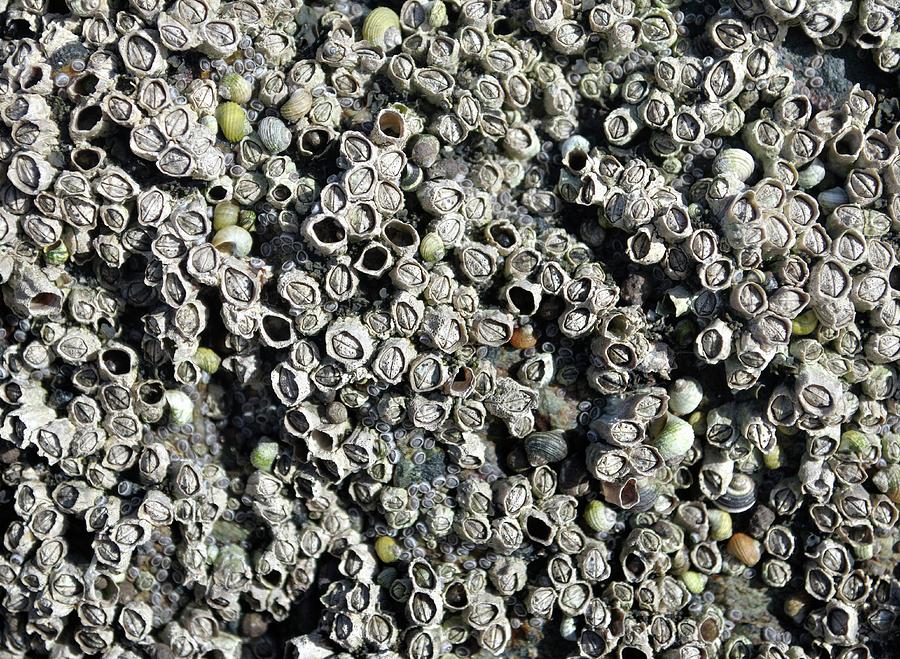

The two shells inside the craters stayed cracked open all the time but they opened wider when the legs were flipped outside. The upended, clam-like shells were open and the feeding legs were being rapidly flicked into the water and then just as quickly withdrawn into the shells at a rate ranging from one to two flicks per second. For the first couple of days I saw nothing, but then one morning there they were. I placed the barnacle-encrusted seashell into a bowl of saltwater brought from the lagoon and waited for the clam-like shells to open and the animal inside to go to work. You can see a diagrammatic cross-section of all this at. When the tide comes in the clam-like shells inside the crater open and the organism's modified legs, called "feeding legs," or cirri, extend outside the shell, and direct food particles such as algae suspended in the water into the organism's mouth. The question then arises, how does a barnacle make its living stuck in such a prison? The stony crater sides slant over the clam-like shells enough to imprison them. In the picture, some craters are empty but in others the closed, clam-like shells are clearly visible. That picture shows that a barnacle consists of a low, stony, crater-like structure inside which resides something like a clam composed of two shells standing on end, opening upward through the crater's hole. This week I picked up a barnacle-covered seashell, brought it home in a jug of saltwater, and you can see it below:

The blocks are submerged only briefly at the very peak of high tides, but even they are completely encrusted with barnacles. During my weekly walks I cross a shallow stream by stepping on cinderblocks someone has placed there. They're stuck to any rock that's flooded at high tide, to older mangrove roots and pneumatophores - even to plastic bottles and other trash that's been floating for some time. On open sites, barnacles are short and squat, but in crowded colonies, their bodies elongate as individuals squeeze up for a bit of space between neighbors.From the FebruNewsletter issued from near Telchac Pueblo in northwestern Yucatán state,, Méxicoĭuring low tides when I'm wandering around Hotel Reef I see lots of barnacles. Of several barnacle species on the West Coast, the acorn barnacle is conspicuous for its beautiful red striations. After several sweeps, the cirri are withdrawn into the body cavity, and comb-like mouthparts scrape food particles into the barnacle’s mouth. Once they find an appropriate object, they release an adhesive substance from large cement glands at the base of their antennae, jettison their swimming legs and begin secreting calcium carbonate shells that will provide shelter for the rest of their lives.īarnacles feed by sweeping long featherlike appendages through the water to catch floating plankton. Tiny free-swimming larvae leave these colonies to seek new homes, preferentially settling on objects with the chemical odor of other barnacles. On rocks and pilings, barnacles grow in gigantic dense colonies. Everything from whales and sea turtles to crabs must either scrape off these crusty creatures or risk being engulfed by them. Whitish barnacles encrust boats and nearly every other solid object that spends time submerged in salt water.


 0 kommentar(er)
0 kommentar(er)
